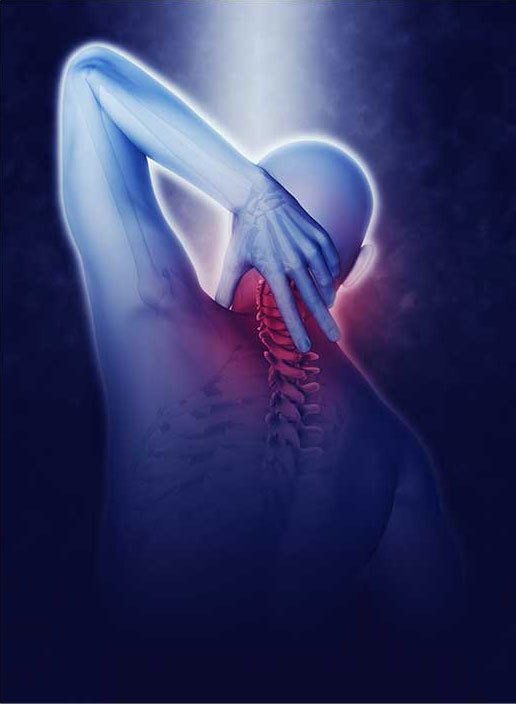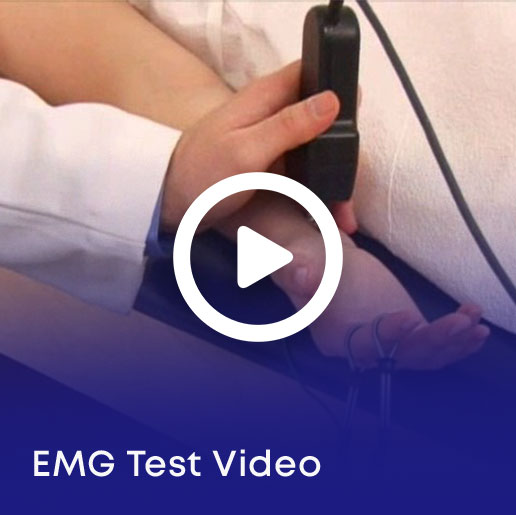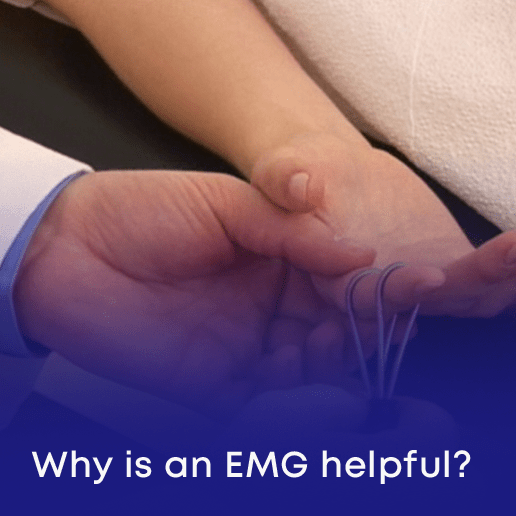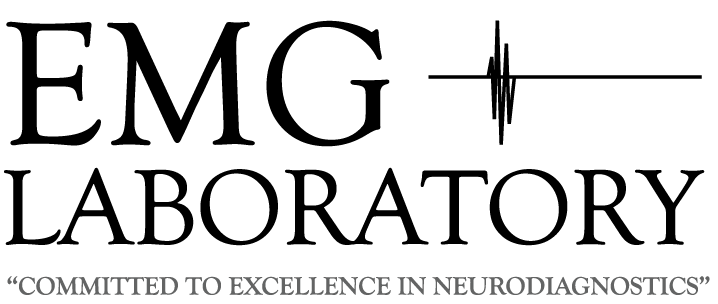Welcome!
EMG Laboratory, led by Dr. Drasko Simovic, is a premier medical practice with an exclusive focus on diagnostics of nerve and muscle disorders. We have been serving the medical communities in Massachusetts and Southern New Hampshire for decades by providing the highest levels of patient care and diagnostic support for referring professionals.

Practice exclusively
dedicated to
EMGs since 1997
Board
Certified in
five disciplines
Highest level of
National EMG Lab
Accreditation



About Dr. Simovic
Dr. Simovic completed his internship at the Cabrini Medical Center, New York Medical College in New York, NY. He graduated from the Boston University Affiliated Residency Program in Neurology in Boston, MA, and completed two fellowships at St. Elizabeth’s Medical Center, Tufts University in Boston, MA. He is Board Certified in Neurology (ABPN), Electrodiagnostic Medicine (ABEM), Clinical Neurophysiology (ABPN-CN), Neuromuscular Ultrasound (ABEM-CAQ) and Disability Analysis (ABDA). He holds the academic appointment of Assistant Professor of Neurology at Tufts University, School of Medicine.
His clinical and research achievements have been featured in national and international scientific and popular media. He has been recognized and awarded for his achievements, and is the recipient of multiple Patients’ Choice®, Most Compassionate Doctor®, Boston Super Doctors®, Castle Connolly Top Doctor® and Distinguished Physician® Awards.

EMG Laboratory
State-of-the-art facility for electrodiagnostic medicine, was awarded the American Association of Neuromuscular & Electrodiagnostic Medicine’s highest level of recognition, Accreditation with Exemplary Status. EMG Laboratory achieved AANEM’s peer-reviewed accreditation for high-quality performance, integrity and patient care, exceeding a rigorous set of measures of excellence.
“We are pleased to receive this accreditation and recognition from the AANEM,” said Dr. Simovic. “Electrodiagnostic medicine is my passion. I receive gratification in my daily work by helping patients along the path of wellness and establishing correct diagnoses. Once we know the name of our ‘medical enemy,’ it’s much easier for physicians to use the appropriate therapeutic tools. My dedication to providing test results to referring physicians on the same day the test is conducted helps doctors provide the best care to their patients.”
Electrodiagnostic medicine and neuromuscular ultrasound help diagnose conditions with symptoms including pain, numbness, tingling and/or weakness from problems such as carpal tunnel syndrome, neuropathy, pinched nerves, and low back and neck pain to complex diseases such as muscular dystrophy and Lou Gehrig’s Disease.
Accreditation
“This accreditation validates the quality of Dr. Simovic’s work as superior,” said Allan H. Ropper, M.D., M.D., Executive Vice Chairman, Department of Neurology, Brigham and Woman’s Hospital, Harvard Medical School. “He’s a dedicated and highly qualified specialist with a strong commitment to electrophysiology and to the patients he treats.
He’s thoughtful about how he conducts studies, tailors the study logically, and provides referring physicians diagnoses with certainty. Such certainty is important. It helps referring physicians make well-informed decisions about a clear course of patient treatment.”


Do you have pain, numbness, tingling, burning or weakness in your limbs?
If yes, ask your doctor if our EMG Lab can help diagnose your condition!

Why do referring offices choose us?
Impeccable
service to the
refering offices
Urgent cases
are rapidly
accommodated
All EMG Tests
are performed by
Dr. Simovic
Quality and
reliability of the
EMG Test results
All unexpected
cases are personally
discussed
EMG Test results
are promptly
reported

When can an EMG help?
Electrodiagnostic medicine helps diagnose conditions with symptoms including pain, nubmness, burning, tingling and / or weakness. The primary goal of electrodiagnostic examination is to determine the site of the lesion. Such testing serves a variety of functions:
• To establish the diagnosis
• To evaluate for concomitant conditions
• To argue for or against an alternative diagnosis
• To establish the type and quantify the severity of the condition
By establishing the correct diagnosis we can help select the best therapeutic option. Although clinical evaluation is irreplaceable, electromyography can help in providing in-depth information about the state of the peripheral myelin, axons or muscles.

Leave us a review

Surgeon told me that he has send his mother to this office
I had a wonderful experience with this office. They accommodated my request to be placed on the cancellation list and called me 3 days later to be see the next day! Office staff was great. Doctor was very pleasant and he was able to diagnose my problem that was fixed by my orthopedic surgeon who told me that he has send even his mother to have the EMG test in this office.


Thank you again Dr. Simovic
Took my mom there for an appt and it was a great experience. The receptionist there was so welcoming. The Dr came out within 5 mins of waiting and welcomed up right away into the room. He joked around and we talked about so many things. He was so knowledgeable about so many different cultures and made us feel so welcomed. Wow! We were in and out of the office in less than 1 hour. Thank you again Dr. Simovic!


Professional and cordial
Recently, my doctor recommended Dr. Simovic, and thankfully I didn’t need to wait too long for my app. I was little bit scared of the needles however with the Doctors expertise and distracting conversation, I felt very comfortable. Staff and the Doctor were professional and cordial, and the whole experience was painless


Put me at ease right away
Dr Simovic put me at ease right away. The test was a little uncomfortable but completely manageable.


Wonderful bedside manner
Drasko Simovic is a neurologist. We used him to do nerve conduction tests related to diagnosing carpal tunnel syndrome. After trying a different neurologist (who was touted as a great diagnostician, but who deserves to work only on corpses in a morgue), Simovic was not only a breath of fresh air, but seemed more competent as well. He has a wonderful “bedside” manner, making my wife comfortable for a series of not-so-comfortable tests. He kept her laughing and unstressed.
We can’t say enough how much we like Dr. Simovic. We recommend him without hesitation or reservation.
His business is called EMG Laboratory.


A very pleasant experience
I found the lady that checks you in, to be very polite, helpful and efficient. The doctor did a very thorough exam and explained what he was doing with every step of the exam. He was very polite and answered any question that I asked him. I found it a very pleasant experience! I would highly recommend this doctor. The staff and doctor are wonderful and very professional.


Top of the line
Great visit. Top of the line professional.


Doctor was very professional
This being my second time seeing Dr Simovic for two different issues. The doctor was very professional, caring and extremely attentive to my issues at hand. Right to the point, this is what I can do, this is what you need to do, I like that in a doctor. I would highly recommend him to anyone I cross paths with who have same issues as I do.


Overall experience was great
I was sent for an EMG by my hand surgeon who questioned my previous EMG from another doctor, that showed carpal tunnel syndrome. After the surgery my symptoms were the same. Dr. Simovic did a very thorough test for over 40 min. He kept me engaged so it was not a big deal. He found a pinched nerve in the forearm that was missed. I was very happy with the office and my overall experience was great.


Superb
My experience with this office was superb. They were very friendly and the doctor was very pleasant and has great skills. I had this test 10 yrs ago and this was much easier. He kept me distracted with few jokes. I had my follow up visit with my hand surgeon in Lowell the next day. Highly recommended.


Intelligent and understandable explanation
The doctor is approachable, office is easy to schedule, no waiting, intelligent and understandable explanation from doctor. Dr. has a good reputation among surgeons. He has been recommended three times to me by three different surgeons over 15 years.


Great experience
Great experience. I was afraid to have the test but doctor made me at ease and very comfortable. My primary doc had the test results on the same day!


I could not have asked for better
I was concerned about the test but i was immediately put at ease with the choice of music to the doctor’s bed side manner. I won’t lie, there is some minor discomfort but the doctor’s sense of humor and great conversation I was quite comfortable. I could not have asked for better.


Great knowledge
Rarely do you find a doctor that has a personality and listens to you. Dr Simovic has both and was a joy to talk to while having my EMG today. His great knowledge of so many different things made the testing pass quickly.








